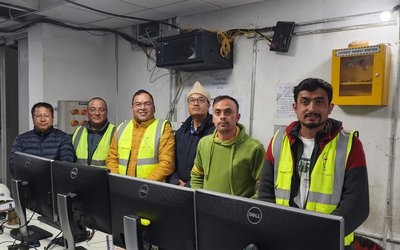Intra-regional trade in South Asia has been very low. Between 1995 and now, intra-regional trade in South Asia remained stagnant at around 5 percent of the total trade volume of the region. Due to this non-cooperation between the South Asian nations, billions of dollars are going out of the region.
Cuts International in association with The Asia Foundation and support from SAWTEE (South Asia Watch on Trade Economics and Environment) and other partners carried out a project titled ‘Cost of Economic Non-Cooperation to Consumers in South Asia’ to enquire into the potential benefits of increase in intra-regional trade to consumers in the region.
According to the researchers, the study was conducted in selected cities of five major South Asian countries—Bangladesh, India, Nepal, Pakistan and Sri Lanka and included a rigorous meta-analysis of past studies on economic integration in South Asia.
“The objective of this project is to analyze the cost that consumers are paying due to non-cooperation of South Asian countries,” said Bipul Chatterjee, Deputy Executive Director, CUTS international.
“If five countries come together and make some changes in their trade policy and if we import from within the region, annual gain would be much more than one billion dollars,” he added.
There are a lot of problems hindering trade in the region. “Intra-regional trade liberalization is very low. There are a host of barriers for trade, from tariff barriers to non-tariff barriers,” said Minister for Commerce and Supplies Lekh Raj Bhatta.
He also stated that Nepal is committed to enhance the efficacy of regional trade.
There are many other regional economic blocs which are much younger than SAARC and are successful in raising regional trade to 50 percent or more. Long standing political tension and fragile diplomatic relations are cited as the main reasons behind lack of progress in implementing the South Asian Free Trade Agreement (SAFTA), states the report.
Likewise, big South Asian countries are maintaining a large number of products with high regional trade potential under their negative lists, keeping them out of bounds of preferential tariff rates under the SAFTA agreement.
“With an integration trade of 5 percent, it is an area that requires attention,” said Nick Langton, Country Representative, the Asia Foundation. “Trade in South Asia is highly politicized and comes with many baggages,” he added.
According to the report, through an algorithm process, a total of 355 product categories are identified from the sensitive lists of SAFTA members which have both high intra-regional trade potential and high prospects for improving consumer welfare. Trade in these categories at preferential rates would help South Asian consumers to save a minimum of about US dollars 2 billion per annum.
“The region has low level of economic integration. Now, it has reached the level of 1950. We have poor connectivity, infrastructure, there is lack of business and structural weakness exists,” said Poush Raj Pandey, Executive Chairman, SAWTEE.
“Along with the cost saving, intra-regional trade will generate many spillover effects, including expansion of production, generation of job opportunities, and improvement in competitiveness and productive efficiency. Above all, this scenario will help to raise the trade flow between South Asian borders to a minimum threshold level required for establishing trade channels with improved trade infrastructures and procedures,” states the project report.
“We have no doubt that this region can improve trade. The region has underperformed, work is needed to understand the problems,” said Edwin Laurent, Economic affairs division, commonwealth Secretariat.
- SWISS SUPPORT: Construction Of A Trekking Trail In Koshi
- Dec 19, 2024
- PM OLI'S VISIT TO CHINA: BRI Agreement
- Dec 16, 2024
- RASUWAGADHI AND SANJEN: Begin Generation
- Dec 03, 2024
- NEPAL, INDIA ELECTRICITY TRADE Nepal's Advantage
- Dec 02, 2024
- PM Oli'S VISIT TO CHINA: Nepal's Dilemma
- Dec 01, 2024
















